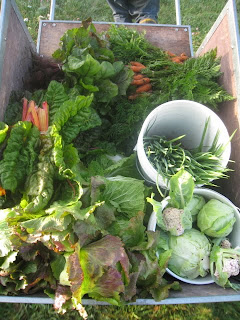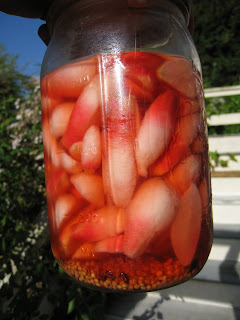I've debated about what to do with the raised bed when it gets full shade in the winter. I decided to try planting a crimson clover cover crop to fix nitrogen over winter. The clover has sprouted and looks like it's doing okay without sunlight:

On November 26, I also planted 15 cloves of garlic. Checked on them outside just now and they have all sprouted. Need to keep the garlic weed free, because as my friend says, "you can grow garlic or you can grow weeds but you can't grow both." Given the relatively narrow rooting of the garlic, it doesn't compete well with other plants. Garlic is planted in the fall/winter and won't be ready to harvest until July. Big commitment but I think it will be worth it. I planted a variety that we received in our CSA, from Riverdog Farm in Guinda, California.















































